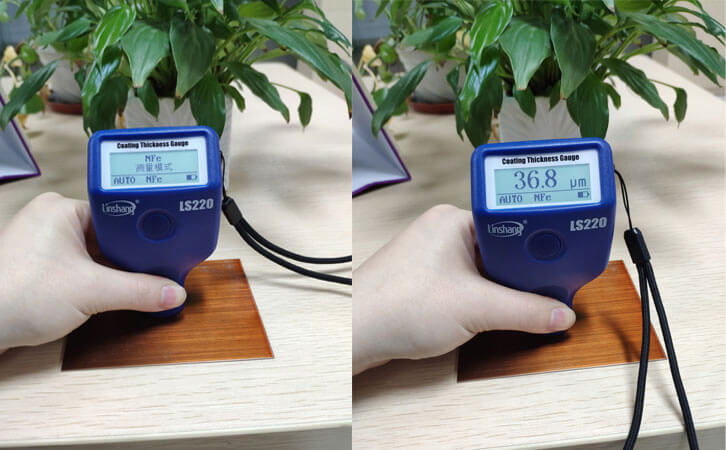Test Case 1 of High Precision Painting Thickness Meter
The Linshang LS220 is a high-precision painting thickness meter for both iron and aluminum substrate. The instrument automatically recognizes the measuring substrate and automatically switches the measurement mode; with a single button, the operation is very simple.
The measurement range of the high-precision painting thickness meter is 0-2000um, and the measurement accuracy is ≤±(3% reading +2um). Suitable for testing the thickness of coatings on various metal substrates.
The figure below demonstrates using the LS220 high-precision painting thickness meter test the thickness of a paint on an aluminum plate substrate.
Zero adjustment: The painting thickness gaugewill be equipped with an iron plate and aluminum plate substrate for zero adjustment. The thickness of the paint on the aluminum plate is currently tested and can be zeroed with an aluminum plate. After the zero adjustment is completed according to the user manual, the measurement can be started.
Press the high-precision painting thickness meter vertically on the surface of the material to be tested. As shown on the left, the painting thickness meter recognizes that the substrate of the material to be tested is non-ferrous material, and the instrument will quickly switch to the NFe mode. Then repress the instrument vertically on the surface of the material. As shown on the right figure, you can see that the painting thickness meter shows that the thickness of the paint on the aluminum plate is 36.8μm.
If the painting thickness meter shows the NFe mode before we test, then the first test allows the instrument to measure the thickness of the paint. And it won't switch the measuring mode.
By testing the thickness of multiple points, we can also determine whether the thickness of the paint on the aluminum plate is uniform. Therefore, the painting thickness meter can also be used to verify the uniformity of the spray process.
